For several years now, we’ve seen a movement gaining speed in the fall. That movement is the push not to do a big fall cleanup. The goal is pollinator protection and natural, organic soil rejuvenation.

To protect beneficial insects and wildlife, we leave the leaves. At the same time, we replicate the nutrient-rich conditions that exist in forests and woodlands by leaving the fallen leaves to break down and feed life for future generations of plants.
This is quite the opposite of the massive fall cleanup initiatives of decades past. The method certainly has its detractors, with people for and against on both sides of the “issue.”
Most homeowners and gardeners find themselves working to strike a balance.
Not all tree leaves are great to leave in the yard or garden, though. In some cases, they can actually cause more problems than they solve.
Which leaves are worth cleaning up? Which leaves are bad for your yard and garden?
Jump to:
Black Walnut
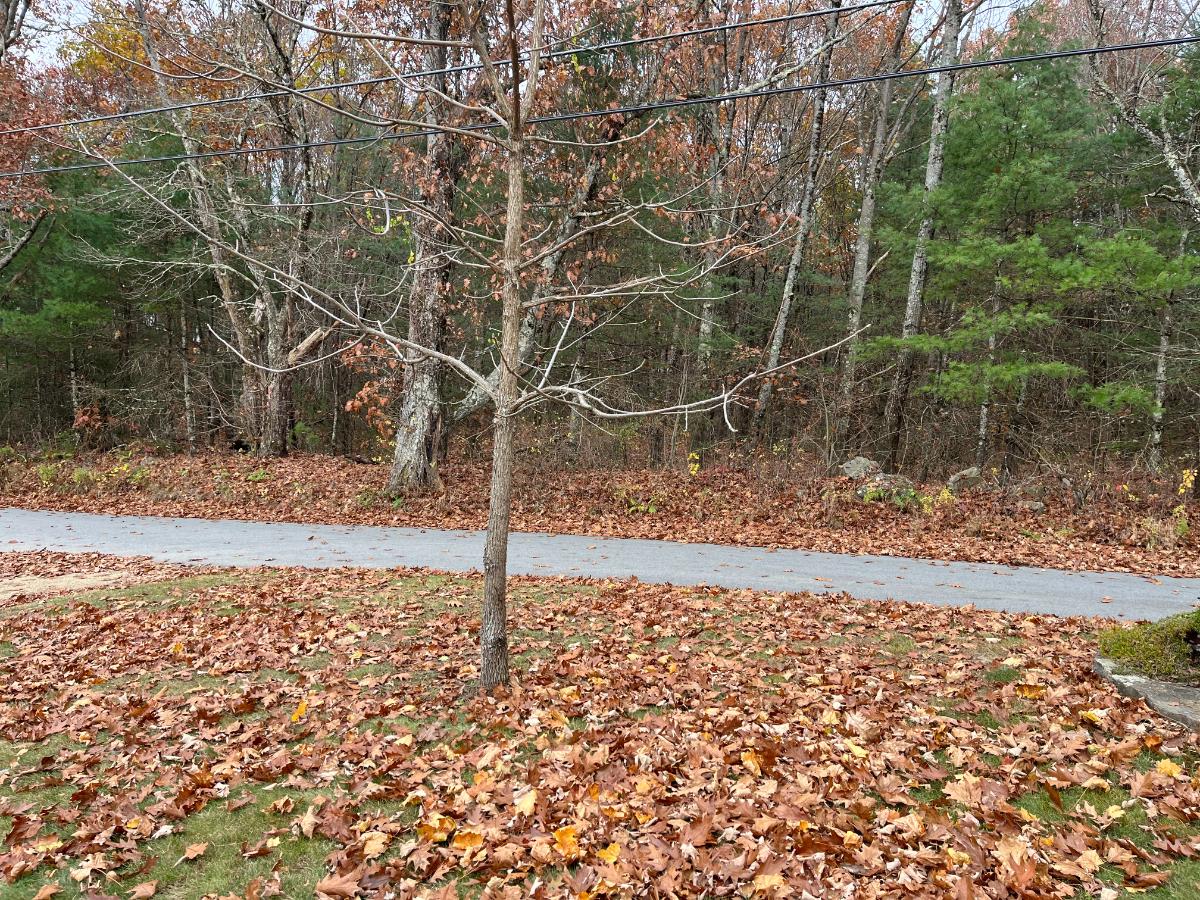
Black walnut trees have a natural defense against being crowded out and competing for resources like nutrients and water. It is that natural defense that makes it not a great idea to leave black walnut leaves on your lawn or in your gardens.
Black walnut trees are what are called allelopathic. Allelopathic plants excrete natural substances that are poisonous to other plants.
Other allelopathic trees whose leaves you might think twice about leaving include hickory, black cherry, red oak, Tree of Heaven (an invasive species in many areas), sassafras, and black locust.
Why not leave black walnut leaves on your yard?
Black walnut leaves contain the natural chemical juglone. Many plants, including a long list of desirable yard and garden plants, are sensitive to juglone and cannot grow in soil where it is present. Or, they might grow, but suffer and struggle with yellowing leaves, stunted growth, and poor production.
If you leave black walnut leaves to their own devices in your yard and garden, they can blow anywhere. You may also spread them to desired growing spaces when you move leaf mulch or litter.
Potentially, the leaves of other juglone producing plants could also be problematic, so if you have any, you might think about an alternative use for them, too.
Of course, if total plant suppression is your goal (meaning suppressing both weeds and garden or landscape plants), then black walnut leaves could be useful.

Popular garden plants that are sensitive to juglone include ornamental, flowering, and vegetable-producing plants. Some of the most popular sensitive plants are:
- Tomatoes
- Potatoes
- Eggplants
- Peppers
- Peonies
- Lilacs
- Azaleas
- Rhododendrons
There are plants that are mostly resistant to juglone, too. Some of these are:
- Carrots
- Parsnips
- Corn
- Onions
- Beets
- Squash
- Melons
- Beans
- Cherry trees
- Violets
- Clematis
- Wisteria
- Yarrow
- Hosta
- Hollyhocks
- Iris
- Aster
- Pot marigolds
- Bee balm
- Mums
- Barberry
- Elderberry
- Currants
- Black raspberries
- Some viburnum species
- Quince
- Find more here
Ways to work with black walnut leaves
Black walnut trees are valuable trees, and their leaves aren’t evil; they just need to be controlled in the context of other plants, yards, and gardens. Here are some things to do with black walnut leaves and some ways to mitigate their negative effects:
- Use black walnut’s allelopathy to your advantage and lay the leaves out as mulch in places where you don’t want other plants or weeds to grow
- Use composted or old, chopped black walnut leaves as mulch for juglone-resistant plants
- Juglone will break down in compost, but it can take a long time
- Put the leaves in a well-managed, hot compost pile, but note or remember that you put black walnut leaves in there
- Only use compost containing black walnut leaves when it is entirely broken down, and you can no longer see whole leaves or pieces of leaves
- Compost only fall leaves, which are relatively low in juglone (compared to spring leaves, which hold the most)
- Only put the leaves of black walnuts in compost piles; do not put black walnut wood, root pieces, branches, or nuts in compost -- all of these contain much higher levels of juglone than the fall leaves do
- Nuts are likely to sprout and grow in a pile, and the roots of black walnuts are one of the highest sources of juglone secretion -- more poison for your pile!
- Consider making a compost pile of only problematic leaf types that you process for longer to give things more time to break down and ensure that problematic compounds like juglone are fully decomposed
- Consider using that compost in places where you want to mulch out weeds but not grow other plants through the mulch (or at least not juglone-sensitive plants)
Oak Leaves

Oak leaves may be a surprising “no leave” leaf. After all, many of us have oak trees in our yards. They are beautiful, stately hardwood trees. They're fun to jump in, but people don’t typically react to them. So, what’s so bad about oak leaves?
Why not leave oak leaves on lawns and gardens?
The problem with oak leaves is not really the leaves themselves. The problem with oak leaves is their decomposition. Left whole, they take a very long time to decompose.
This can cause problems on a lawn or in a garden bed. If it is soil or leaf mold from composting and breakdown that you’re after, you’ll have a harder time getting it from whole oak leaves.
A single tree or an oak tree intermingled with other tree leaves may not cause a large or notable problem. But if your yard is covered in thick mats of oak leaves, things may struggle.
Lawns covered in a continuous mat of oak leaves can easily become smothered to the point that grass can die.
The same is true in flower and garden beds. In the spring, perennials, reseeding plants, and young plants can be choked out from a layer of oak leaves, which essentially acts as a mulch barrier against your desirable plants.
Whole leaves that don’t break down into soil over the winter can become a high nitrogen draw on garden soil (they’ll tie up nitrogen until they decay and become soil, which means it is tied up for an extended period of time).
Ways to work with oak leaves
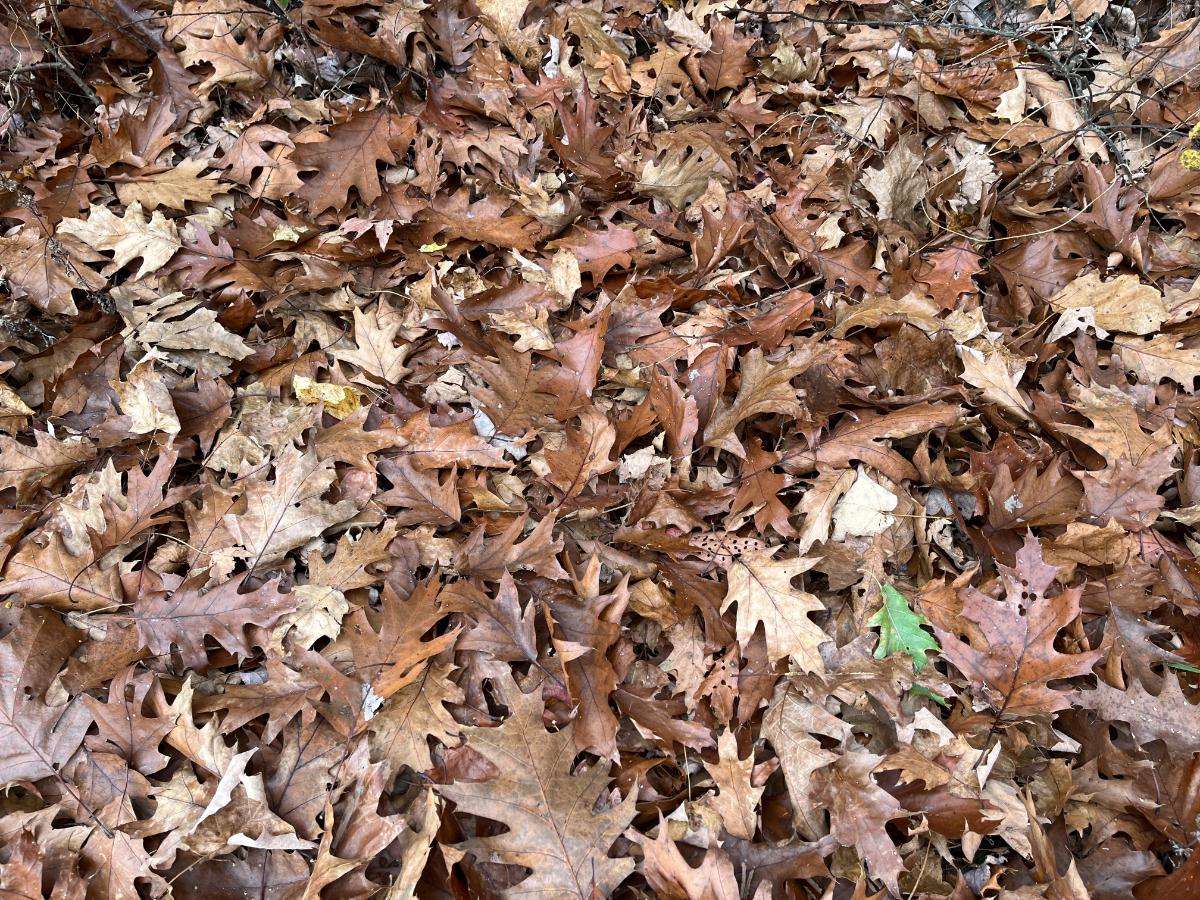
It’s not all bad with oak leaves. You can put the leaves to good use for you. It’s just that they should probably be managed and controlled so that they don’t kill grass and ruin gardens or landscape spaces.
- Chop oak leaves by running over them several times with a lawn mower
- This will help speed up their breakdown and decay process
- Do be aware that even when chopped, your compost or soil may still contain a lot of nitrogen-tying decomposing leaf pieces
- At least if they are chopped, those leaves are less likely to create a lawn-smothering layer that will kill your grass or plants that it is blanketing
- Put chopped oak leaves into a very hot compost pile
- This allows them to break down more completely and more quickly
- A hot compost pile will require a high nitrogen content, as nitrogen is what heats up compost piles (grass clippings, for example, are a high nitrogen source)
- Don’t use the compost until it looks like soil and you can’t see large oak leaf pieces anymore
- Use oak leaves as a whole leaf mulch
- Work whole leaf mulch around desirable plants, but if needed, pull it back from the plant crowns in the spring to allow them to emerge
- Pile oak leaves elsewhere where they won’t cause damage to desired lawns, plants, or garden beds
- Piling oak leaves is a happy medium of pollinator and insect protection because you are just moving the leaves, not taking them away
- If insects or eggs are in the leaves, you’ll probably move most of them along with the leaves
- The pile will still be there for small wildlife and others to find to hibernate in -- it will just be in a different part of your yard
Beech
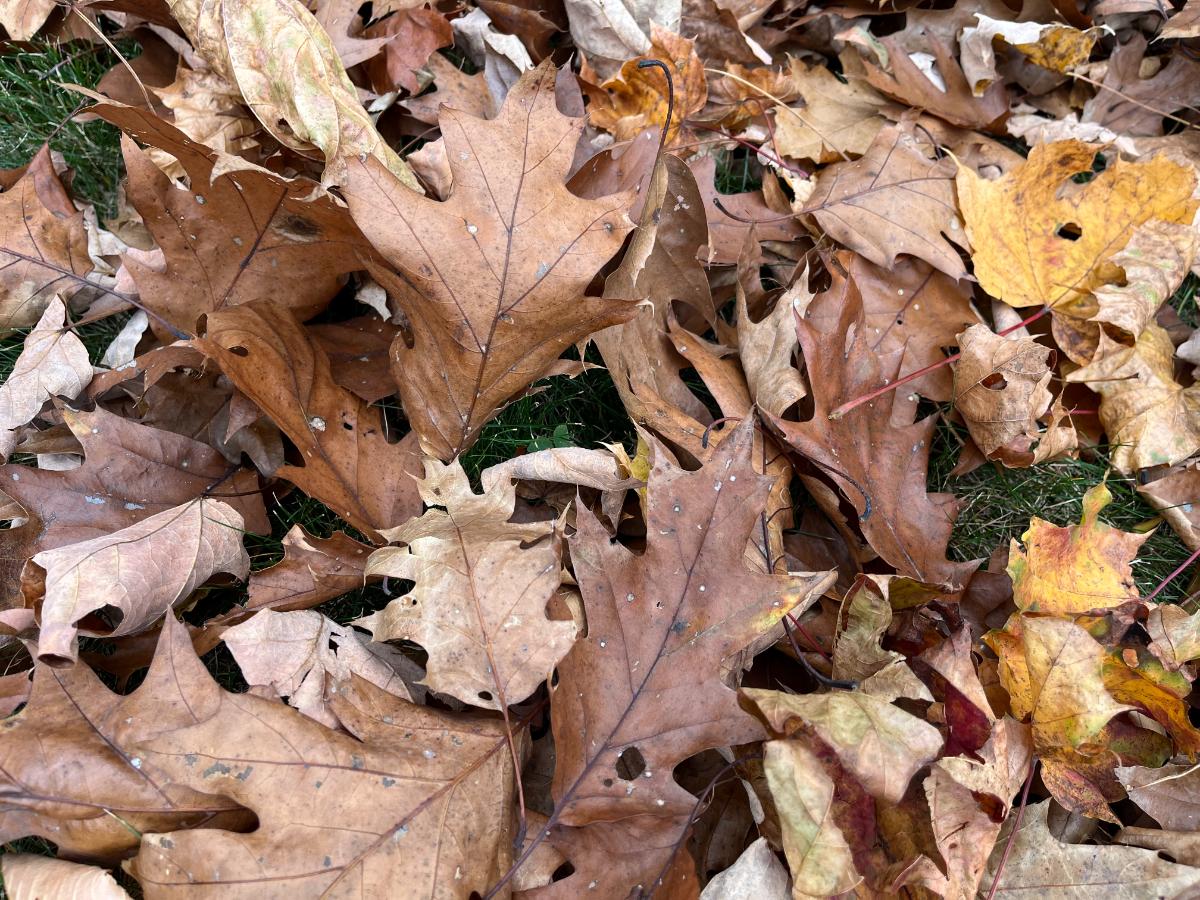
Beech leaves are similar to oak. They are difficult to break down, and that may smother other plants or cause issues if there are too many leaves that are not decomposed in your garden soil at planting time.
Both oak and beech leaves contain high levels of lignin. The more lignin that leaves contain, the longer it takes for them to break down. Other trees and leaves that contain high levels of slow-decomposing lignin include holly and conifers like pine and spruce.
Why not leave beech leaves in your yard in the fall?
In short, all the reasons that it is a bad idea to leave large swathes of oak leaves in your yard are all the reasons why it is a bad idea to leave large swathes of beech leaves.
They’re a problem for the future of your grass, your plants, and your soil.
Ways to work with beech leaves
Work with beech leaves similar to how you manage oak leaves:
- Chop up beech leaves with a lawn mower to break them down into smaller, more decomposable, compostable pieces
- Compost beech leaves in a separate pile that you are able to leave to break down longer (one that you won’t need as soon)
- Use hot compost methods to break down beech leaves
- Use beech leaves as a whole leaf mulch in places where you want to smother and keep plants from growing
- Use whole leaf or chopped beech leaf mulch around established plants
- If necessary, pull the mulch back in the spring to allow perennials and desired plants to emerge
- Pile beech leaves elsewhere where they will not cause problems and/or where they can break down over a long period of time (years) without smothering or impacting your landscape and garden beds
Poison Tree and Vine Varieties, Including Poison Ivy, Oak, and Sumac

If at all possible, it’s best not to leave the leaves of trees and vines that cause allergic reactions in your yard. These include poison ivy, poison sumac, and poison oak.
However, in this case, you’ll have to decide if there is a reasonable way to remove them without putting yourself or your family at risk.
Even the dropped and dead leaves of poison ivy and related allergenic plants can cause telltale reactions and poison ivy rashes. All of these plants contain urushiol. Urushiol is an oil. It is difficult to remove but easy to spread by contact with any part of the plant or even from touching shoes, pets, or clothes that got the oil on them.
As with most oils, urushiol takes a long time to go away. It’s entirely possible to get poison ivy by touching dead leaves (and other plant parts) at any time of the year, really, for as long as the plant parts remain even partially intact.
That means that cleaning them up and getting rid of them might be easier said than done, even though they are a bad idea to have lying around your yard.
Why not leave poison ivy leaves in your yard in the fall?
As you might expect, this one is all about the allergic responses that poison ivy and similar plants cause.
Don’t burn the leaves, either, or any other parts of poison ivy and poison plants that contain urushiol. The oil can easily carry smoke into the air. You can get surface skin reactions this way. When inhaled, it can cause systemic reactions internally and in the airways that can be extremely hard to control. The reactions and breathing issues caused by such exposure can even be fatal.
Ways to work with poison ivy and related leaves
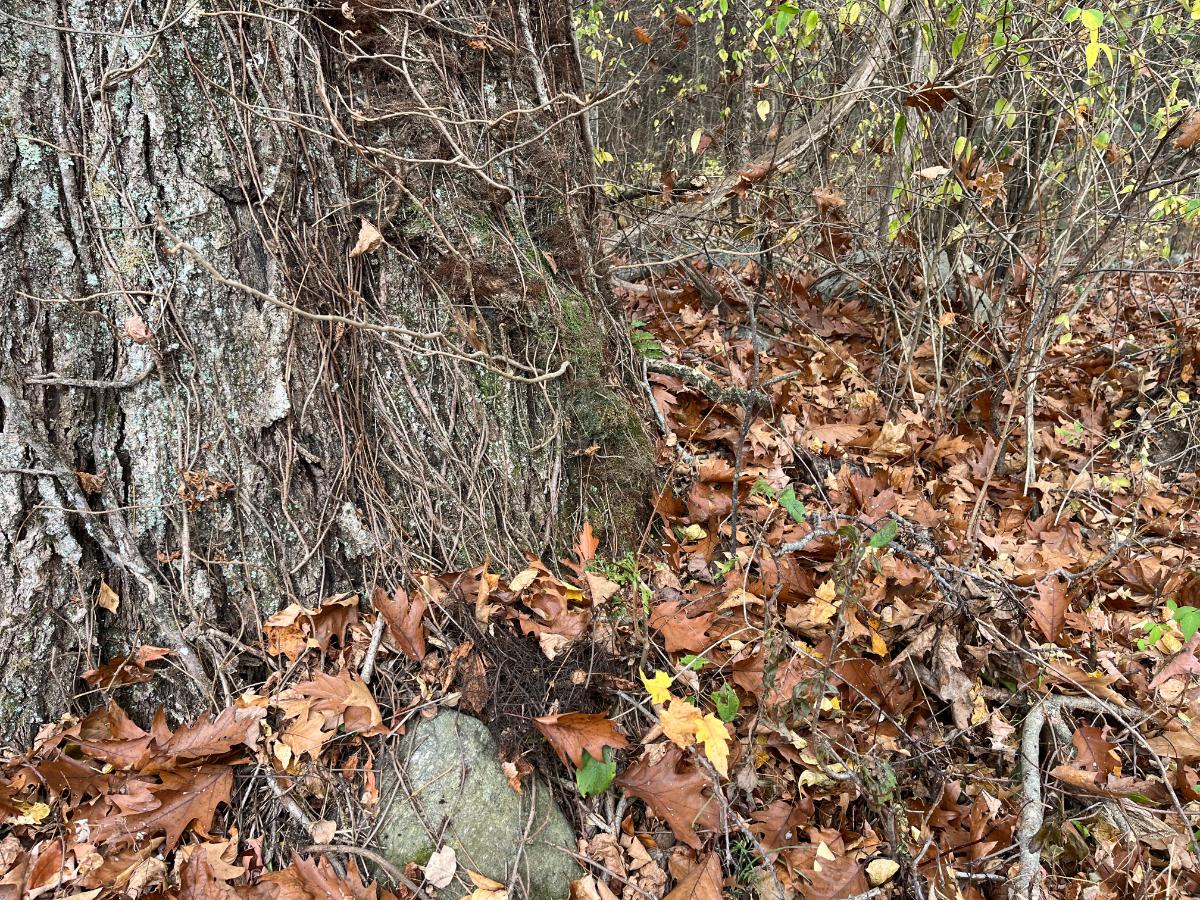
How can you work with poison ivy leaves in your fall yard?
- If you don’t have to, don’t
- If you think poison ivy leaves may be blowing into your yard, take precautions when cleaning up leaves
- Use gloves and covered clothing
- Use a skin barrier lotion that helps to prevent reactions before touching or cleaning up poison ivy leaves
- Wash quickly with yellow soap or a dish soap that breaks down oils, like Dawn dish detergent
- Shower with a good soap like fels naptha, anti-urushiol soap, or yellow Dial soap as soon as possible
- Don't let children jump in leaf piles if you think there could be poison ivy in them
- Do not burn
- Use a hands-off method, like a leaf blower, to get the ivy leaves to a less accessible space
- Blow away into woods or an unused/untraveled area of your yard
- Bag and dispose of if possible
- Take steps to kill the vines and remove the plant from your yard so you don’t have to continue to deal with the leaves in the future, which will never have a good, beneficial use
- If exposed, the same poison ivy treatment options that you use in the summer can help at any time of the year.
Balance is Key to Good Yards, Gardens, and Pollinator Protection
We want nice-looking, thriving yards and gardens. We can also appreciate the role of beneficial insects, wildlife, and pollinators. We can appreciate that some changes to our gardening and yard maintenance ways can benefit us all.
To do that, we have to find a balance that is beneficial to us all. Leaving leaves of trees that will do more harm than good, potentially killing plants, pollen sources, and habitats, is not a straightforward answer.
As we’ve seen here, we can learn to work within these bounds to have both a thriving yard and protect the pollinators as we do.


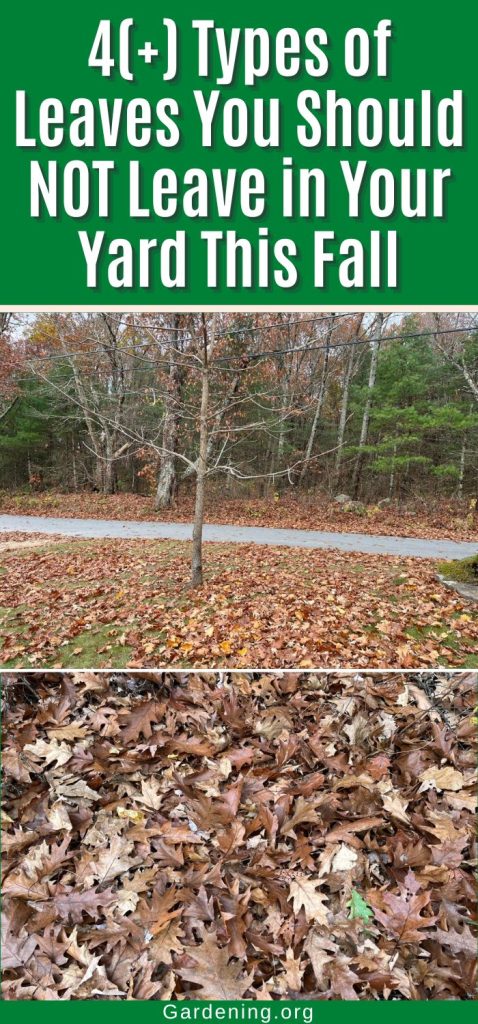
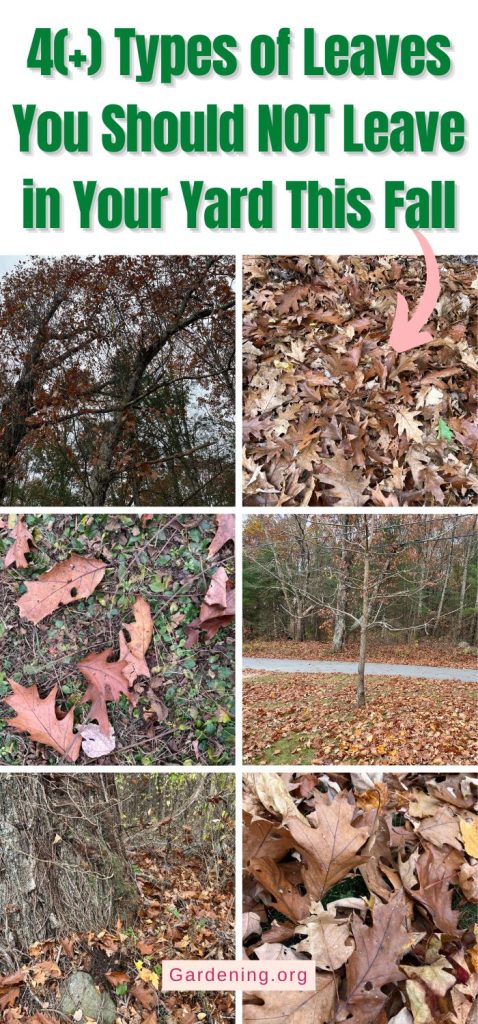
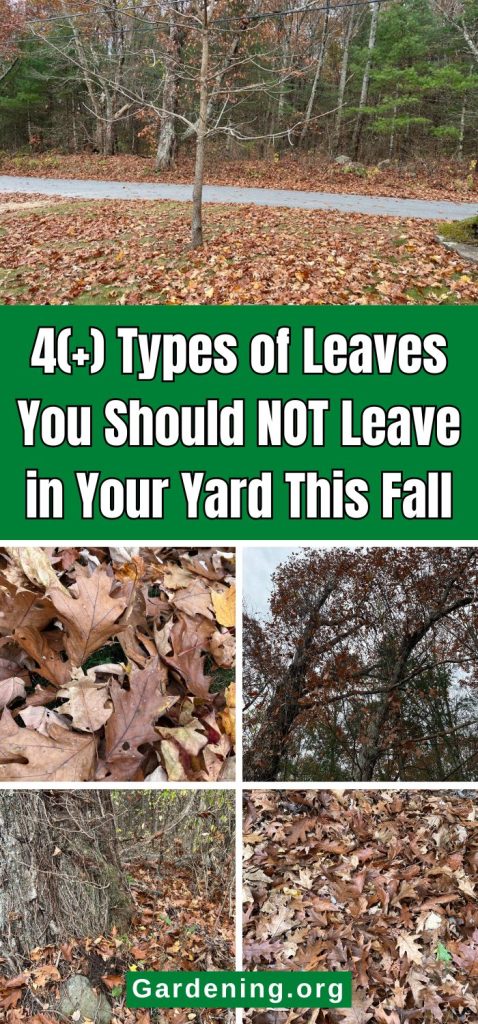




Leave a Reply